The National Palace Museum’s Southern Branch yesterday opened a special exhibition featuring artwork from or linked to Okinawa’s historical Ryukyu Kingdom, including a celebrated ink brush cat painting.
The exhibition is to display 154 Okinawan artifacts, including three cultural properties of Japan and 11 prefectural or municipal-level heritage objects on loan, museum deputy director Yu Pei-chin (余佩瑾) said.
The Ryukyu Kingdom, also known as the “bridge to 10,000 nations,” was a hub of maritime trade and cultural exchange for many centuries, connecting Taiwan, China, Japan, Korea and Southeast Asia, the museum said.
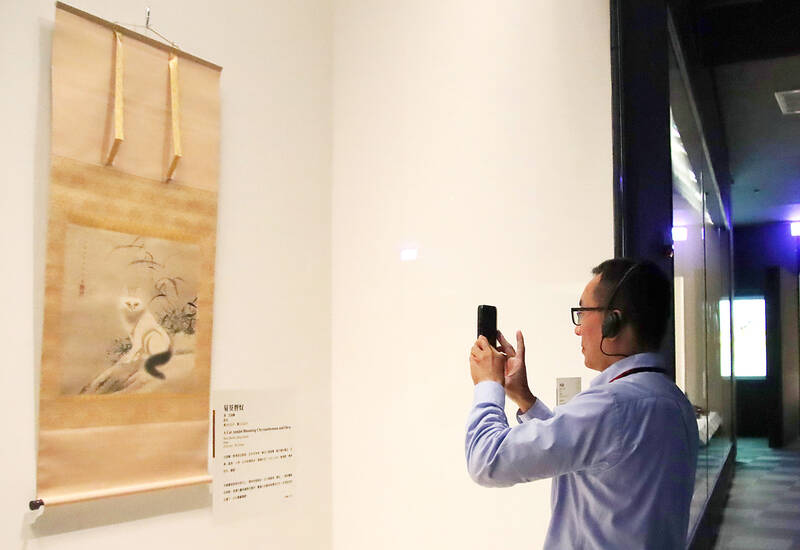
Photo: Lin Yi-chang, Taipei Times
About half of the exhibition’s displays are art objects from China’s Ming (1368 to 1644) and Qing (1644 to 1911) dynasties associated with Okinawa, it said.
They include a high-stemmed lidded bowl in gold glaze from the Qing Dynasty’s imperial workshop, an identical version of which can be found in the Yomei Bunko historical archive in Kyoto, it said, adding that the latter was gifted to Ryukyu by the Qing Yongzheng Emperor.
One of the Japanese cultural properties is a three-lugged ceramic vessel with a tricolor glaze of green, blue and brown on the external and interior surfaces, a technique suggestive of Chinese influence, it said.
A red winter tunic embroidered with dragons and a yellow winter tunic embroidered with diamonds — both signifying royal power — are the some of the Japanese cultural properties expected to be displayed later, it said.
The exhibits also include six Okinawa prefectural cultural properties and five Urasoe municipal cultural properties, including the Divine Cat by Ryukyu court painter Soki Yamaguchi, the museum said.
Yamaguchi’s artworks showcase superb lining techniques, subtle colors and vivid expressions of a cat’s gaze and suppleness, marking it as a masterpiece of 18th-century Ryukyu art, the museum cited Naha City Museum of History researcher Yu Suzuki as saying.
This painting is a perennial favorite of cat lovers visiting Okinawa, she added.
The exhibit would be divided into three sections to contextualize Okinawa’s history and culture, the branch’s deputy director and curator Cheng Wing-cheong (鄭永昌) said.
Okinawa’s geography and customs would be showcased in a section featuring maps from the 15th to 18th centuries that depict the extent of the Ryukyu Kingdom’s territory, he said.
Another section is dedicated to Okinawa’s maritime ties with East Asia, with special attention to the Ryukyu Kingdom’s relations with Taiwan, imperial China and shogunate Japan through the ages, Cheng said.
A final section covers the spread of material culture and art, with focus on the kingdom’s outward-looking foreign and trade policies that led to an embrace of diverse influences in culture, art and craftsmanship, he said.
The special exhibition on the Ryukyu Kingdom is to run until Dec. 1, with companion academic conferences on Oct. 4 and Oct. 5, the museum said.
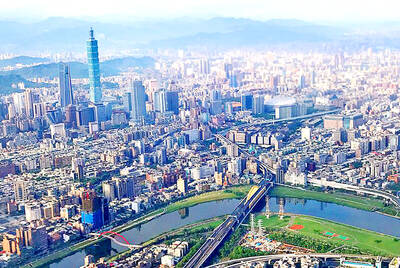
Taipei has once again made it to the top 100 in Oxford Economics’ Global Cities Index 2025 report, moving up five places from last year to 60. The annual index, which was published last month, evaluated 1,000 of the most populated metropolises based on five indices — economics, human capital, quality of life, environment and governance. New York maintained its top spot this year, placing first in the economics index thanks to the strength of its vibrant financial industry and economic stability. Taipei ranked 263rd in economics, 44th in human capital, 15th in quality of life, 284th for environment and 75th in governance,
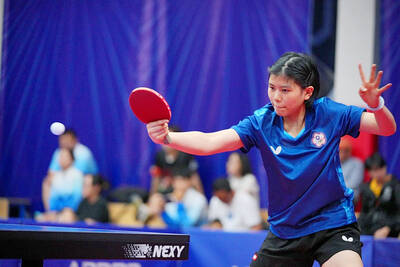
The Sports Administration yesterday demanded an apology from the national table tennis association for barring 17-year-old Yeh Yi-tian (葉伊恬) from competing in the upcoming World Table Tennis (WTT) United States Smash tournament in Las Vegas this July. The sports agency said in a statement that the Chinese Taipei Table Tennis Association (CTTTA) must explain to the public why it withdrew Yeh from the WTT tournament in Las Vegas. The sports agency said it contacted the association to express its disapproval of the decision-making process after receiving a complaint from Yeh’s coach, Chuang
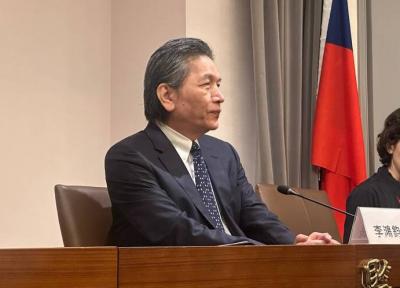
Control Yuan Secretary-General Lee Chun-yi (李俊俋) tendered his resignation last night, admitting that he had misused a government vehicle, as reported by media. His resignation was immediately accepted by the Control Yuan. In a statement explaining why he had resigned, Lee apologized for using a Control Yuan vehicle to transport his dog to a pet grooming salon on May 20. The issue first came to light late last month, when TVBS News reported that Lee had instructed his driver to take the dog to the salon. The news channel broadcast photos that it said were taken by an unnamed whistle-blower, which purportedly showed the
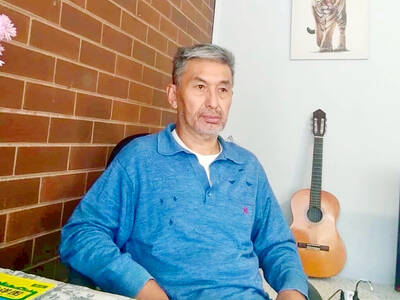
A former officer in China’s People’s Liberation Army (PLA) who witnessed the aftermath of the 1989 Tiananmen Square massacre has warned that Taiwan could face a similar fate if China attempts to unify the country by force. Li Xiaoming (李曉明), who was deployed to Beijing as a junior officer during the crackdown, said Taiwanese people should study the massacre carefully, because it offers a glimpse of what Beijing is willing to do to suppress dissent. “What happened in Tiananmen Square could happen in Taiwan too,” Li told CNA in a May 22 interview, ahead of the massacre’s 36th anniversary. “If Taiwanese students or